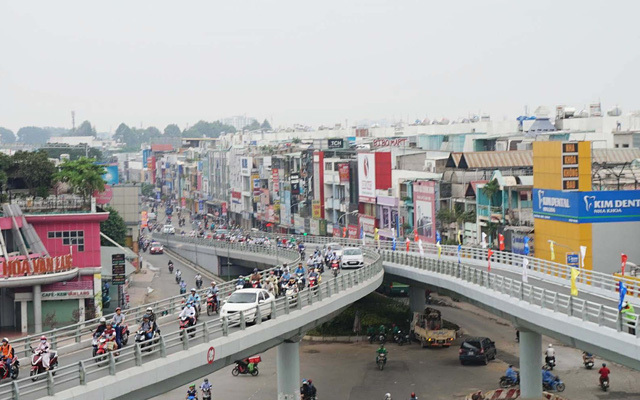“Real estate firms are ‘on the defensive’. It is not the right time to ‘attack’,” said Nguyen Tran Nam, former Deputy Minister of Construction.

Nam cited a report as saying that the number of licenses granted to construction works has decreased by 16 percent, while 150 licensed projects have been suspended for examination.
As a result, the number of apartments, villas and houses launched into the market in Hanoi and HCMC has decreased by 30 percent compared with Q4 2018.
Asked why the real estate market has cooled down after hot development in 2014-2018, Nam said concerns about ‘real estate bubbles’ exist, prompting the government to take action to restrict the credit flow into the real estate market.
He warned that the capital flow would be restricted even more in the time to come.
|
The State Bank of Vietnam’s (SBV) Circular No 36 stipulates that the proportion of short-term capital which can be used for long-term lending must be cut from 60 percent to 40 percent within two years. |
The State Bank of Vietnam’s (SBV) Circular No 36 stipulates that the proportion of short-term capital which can be used for long-term lending must be cut from 60 percent to 40 percent within two years.
A local newspaper reported that the credit growth rate for the real estate sector slowed to 8.56 percent in 2018 from 12.86 percent in 2016.
Not only tightening control over real estate lending, the government has also requested to check land development programming and inspect some huge projects. As a result, the supply is reducing in the context of increasingly high demand.
“Realtors now must be sure that they can strictly follow all procedures and requirements set by appropriate agencies. If they don’t, they will see their projects suspended,” he said.
Also, Mam said there are two bad investment trends in the real estate market.
First, investors have flocked to Mui Ne, Van Don and Phu Quoc to buy land, causing a ‘land fever’ in the localities.
Second, investors are now rushing to pour money into resort real estate projects, mostly in sea cities/provinces of Hai Phong and Hung Yen. In the localities, the land is still cheap and the required procedures are not too complicated.
Nguyen Manh Khoi from MOC confirmed that the real estate supply in the first four months of 2019 decreased significantly in comparison with 2018, especially in the supply of mid-end apartments.
Meanwhile, the supply of high-end products had increased. Products priced at VND200-300 million per square meter have appeared in large cities.
According to deputy chair of the Vietnam Real Estate Association, Nguyen Manh Ha, large projects were all marketed in Q4 2018 and realtors are awaiting new projects to be licensed.
RELATED NEWS
Three leading trends in Vietnam’s real estate market
Seven worrying problems for HCMC’s real estate market in 2019
Mai Lan
 The real estate market developed well in 2014-2018, but unexpectedly has cooled down since the beginning of 2019." itemprop="description" />
The real estate market developed well in 2014-2018, but unexpectedly has cooled down since the beginning of 2019." itemprop="description" />